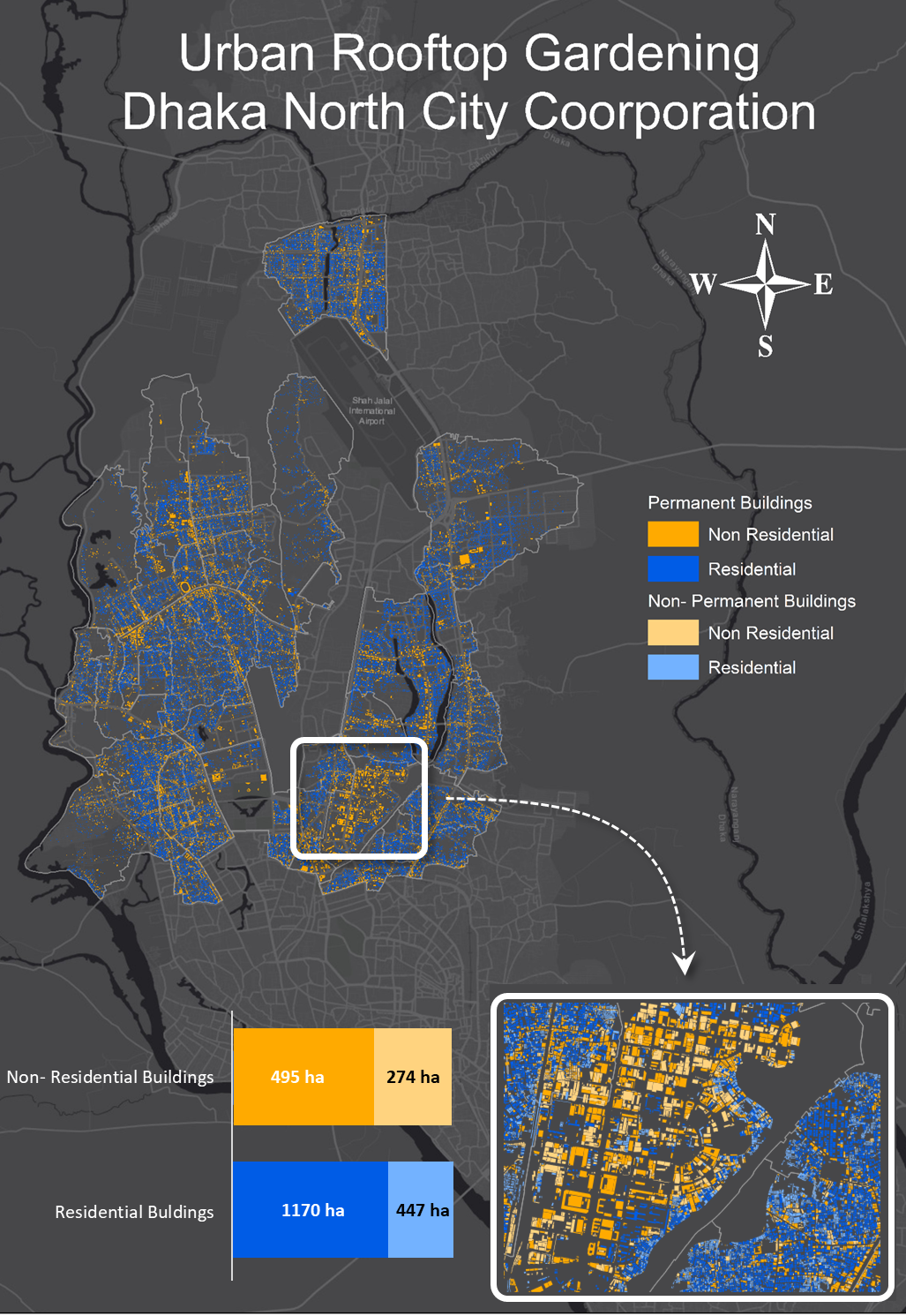Dhaka’s rapid urbanization and growth into surrounding agricultural regions is placing massive demand on urban food supply systems. Moreover, as many cities in the world, Dhaka is facing a rapid decrease in green space and increase in heat island effects. These challenges can be combatted if we look upwards. Rooftop gardening is promoted as a potential solution to these challenges (Smit, Nasr & Ratta, 2001): it improves food security and nutrition, it increases the fruit and vegetable intake, it absorbs carbon emissions and noise, and rooftop gardens are insulators that cool down buildings by absorbing heat and reduce the need for air-conditioning. Moreover, schools with rooftop gardens can encourage children to become interested in gardening and a place to learn about plants, agriculture, and nutrition. Thus there are great many benefits from rooftop gardening. How much rooftop area can we bring under cultivation?
Not all Dhaka roofs can support rooftop gardening; constructions may simply not be strong enough (including most buildings in slums). From all permanent buildings that are strong enough, it is probable that buildings that are used for living are easier to use for gardening than offices, factories and shops, since residential buildings are owned and managed by the residents themselves. Dhaka North, a city corporation that promotes rooftop gardening, is predominantly made up of residential buildings, of which 1170 ha could be suitable for rooftop gardening due to their permanent construction. For the residents of these buildings, the government has an incentive in the form of a 10 percent holding tax rebate. In addition, there is 495 ha of roof space available on properties that do not have a primary residential function
Perhaps we are overestimating things here. After all, not all roofs are flat (pitched roofs are unsuitable for rooftop gardening) and roofs are also used for other purposes that take up space. Now-a-days, open spaces and playgrounds for children are very rare in Dhaka city. One of the few options for children to play is at roofs. Moreover, roof tops are used for drying laundry and for sun bathing in winter. If only a quarter of the roof area is used for these purposes, still 416.25 ha would be left for rooftop gardening. That would make up 0.42 % of the demand of fresh vegetables.
Sources
- Safayet, M., Faqrul, A., Hasan, M., 2017, Present practice and future prospect of rooftop farming in Dhaka city: A step towards urban sustainability, Journal of Urban Management, 6(2), pp. 56-65
- Smit, J., Nasr, J., Ratta, A., 2001,Urban agriculture: Food, jobs and sustainable cities, The urban agriculture network Inc, New York
